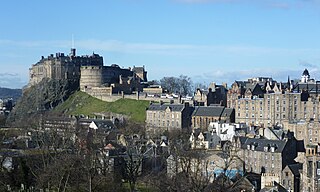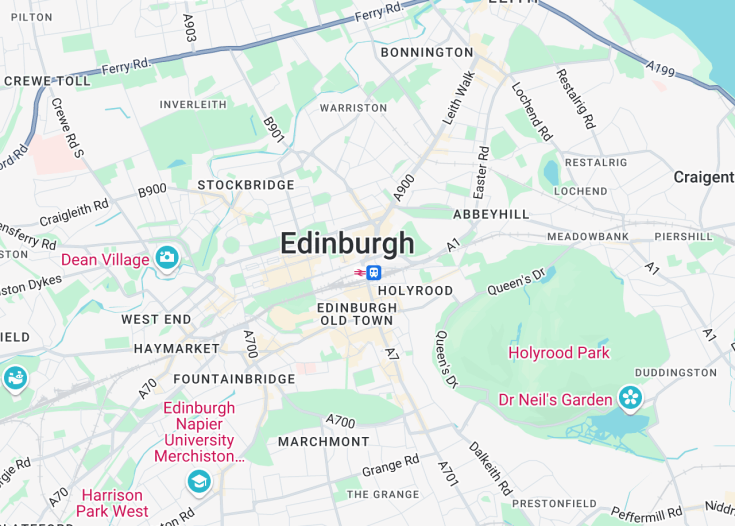Edinburgh, the capital city of Scotland, is a blend of ancient heritage and modern sophistication. The city’s skyline, dominated by the historic Edinburgh Castle, tells tales of its medieval past, while its vibrant festivals embody the contemporary culture and dynamism. Edinburgh is renowned for its well-preserved historic buildings, its pivotal role in Scottish history and literature, and its lively cultural scene, making it a captivating destination for travelers seeking a rich, cultural experience coupled with scenic beauty.
When visiting Edinburgh, be sure to walk the Royal Mile from the Castle down to Holyroodhouse to fully experience the city’s historical ambiance.
For an unforgettable view, climb Arthur’s Seat early in the morning. This dormant volcano provides panoramic views of the city in the golden light.
Top things to do & see in Edinburgh
Select the following sights and activities to discover best tickets and tours available in Edinburgh.
Edinburgh: The Historical Heart of Scotland
| Country | Scotland (United Kingdom) |
| Time in Edinburgh | GMT+0 |
| Language spoken | English |
| Population | 537,120 (source: City of Edinburgh Council) |
| Currency | Pound Sterling (£, GBP) |
| Airports |
|
Edinburgh, the capital city of Scotland and one of its most significant cultural and historical hubs, serves as a living museum to Scotland’s illustrious past. Situated atop a series of extinct volcanic hills, the city presents a striking skyline dominated by the historic Edinburgh Castle, which rests on one such crag known as Castle Rock. The city’s Old and New Towns are listed as UNESCO World Heritage sites, illustrating a dual architectural character that spans centuries.
The rich tapestry of Edinburgh’s history encompasses major events such as the Scottish Enlightenment, which saw the city emerge as a cradle of ideas influencing the broader world. It is also famous for the Edinburgh International Festival and its accompanying Fringe — the world’s largest annual international arts festival.
Edinburgh is not just about historic monuments and festive atmospheres. The city is an educational hub, home to prestigious institutions like the University of Edinburgh, influencing global thought and innovation. The juxtaposition of medieval relics and Georgian grandeur alongside modern developments encapsulates the city’s ongoing dialogue between its past and present.
Commercially, Edinburgh holds a commanding position within the UK’s economy, especially in the financial sector, second only to London. This robust economic stance helps drive national economic growth, making it a pivotal region within the overall structure of the UK.
One cannot overlook Edinburgh’s natural settings — from the panoramic views atop Arthur’s Seat to the serene waters of the Leith. These natural landscapes offer residents and visitors alike an essential escape and a reminder of the city’s unique setting. In essence, Edinburgh embodies a perfect blend of historical reverence, intellectual pedigree, and breathtaking landscapes, making it a must-visit destination for anyone looking to delve deep into Scottish culture and history.
Where is Edinburgh?
Edinburgh is located in southeastern Scotland, lying on the southern shore of the Firth of Forth.
Distances:
| Route | Distance by car | Time by car |
|---|---|---|
| Glasgow to Edinburgh | 47 mi (75 km) | 1 hr 10 mins |
| Aberdeen to Edinburgh | 130 mi (209 km) | 2 hrs 30 mins |
| Inverness to Edinburgh | 155 mi (250 km) | 3 hrs 15 mins |
What is Edinburgh famous for?
Edinburgh is renowned globally for its historical and cultural significance. It hosts the Edinburgh Festival Fringe, the world’s largest arts festival, and is celebrated for its rich history, preserved in structures like Edinburgh Castle and the old medieval city layout.
History
Edinburgh has a rich historical tapestry that spans several millennia, encompassing invasions, innovations, and cultural milestones. The evolution of this city provides a fascinating insight into Scotland’s past.
Prehistoric Origins & Roman Contact (Prior to 1st Century AD)
The area now known as Edinburgh has been inhabited since at least the Bronze Age, as evidenced by archaeological finds at Cramond. Its strategic position near the Firth of Forth made it an ideal spot for early settlers. The Romans arrived in Scotland around the first century AD, and artifacts suggest that they had contact with the Votadini tribe, who may have lived in the area now covered by Edinburgh.
Early Middle Ages & the Formation of the Settlement (600–1093 AD)
During the early Middle Ages, Edinburgh emerged as a significant settlement. By the time of King David I in the 12th century, it was recognized as a royal burgh, a town of major administrative importance. The king built Edinburgh Castle, a pivotal structure in the city’s history, which began to attract more residents and commerce, solidifying its status as a critical hub.
The Renaissance & Union of the Crowns (1500–1603)
Edinburgh flourished during the Renaissance, experiencing an era of intellectual awakening and architectural development. The city’s university was founded in 1582, becoming a cornerstone of Enlightenment thought. The Union of the Crowns under James VI & I in 1603 began an uneasy relationship with England, which would eventually lead to political and social upheaval.
Enlightenment to Industrialization (1700s–19th century)
The 18th century marked Edinburgh’s golden age of enlightenment, with advancements in philosophy, economics, and sciences. Figures like David Hume and Adam Smith were central to these developments. However, the Industrial Revolution of the late 18th and 19th centuries transformed the cityscape with the construction of New Town, thus accommodating the burgeoning economic class and reshaping Edinburgh’s socioeconomic structure.
Modern Day Edinburgh (20th Century to Present)
In the 20th century, Edinburgh adapted to modernity, surviving the challenges of World Wars and transitioning to a service-based economy. The city today is known for its vibrant cultural scene, historical sites, and as a centre for education and politics in Scotland, hosting the Scottish Parliament established in 1999. Contemporary Edinburgh continues to evolve, holding onto its historical roots while facing modern challenges.
Visit Edinburgh
What to see and do in Edinburgh
Edinburgh, the capital city of Scotland, is a blend of ancient history and modern elegance. Visitors can explore the iconic Edinburgh Castle, perched dramatically on a volcanic rock, and stroll down the historic Royal Mile that stretches from the castle to Holyrood Palace. The city is also famous for its vibrant cultural scene, particularly during the Edinburgh International Festival and its fringe, the largest arts festival in the world. Nature enthusiasts will enjoy the serene beauty of the Royal Botanic Garden and the panoramic views from Arthur’s Seat. A must-visit is the National Museum of Scotland which covers Scottish antiquities, culture, and history.
Festivals and Events in Edinburgh
Edinburgh is renowned for its year-round festivals. The most famous is undoubtedly the Edinburgh Festival Fringe, happening every August, which transforms the city into a hub for performers and artists from around the globe. In December, Edinburgh’s Christmas and Hogmanay bring festive cheer and spectacular New Year celebrations. Other notable events include the Edinburgh International Book Festival and the Royal Edinburgh Military Tattoo, a showcase of military precision and pageantry against the backdrop of Edinburgh Castle.
Best time to visit Edinburgh
The best times to visit Edinburgh are from March to May and September to November. During these months, the weather is mild, and the city is less crowded compared to the peak summer tourist season. Additionally, visiting in the spring or autumn provides the chance to experience the city’s natural beauty in bloom and the spectacular autumn colors.
Is Edinburgh worth visiting?
Edinburgh is undoubtedly worth visiting for its rich historical heritage, stunning architecture, and vibrant cultural scene. The city offers a plethora of activities catering to different interests, from history enthusiasts to art aficionados. While Edinburgh can be crowded during major events and the weather may be unpredictable, the city’s charm, friendly locals, and the wealth of experiences make it a top destination on many travelers’ lists.










